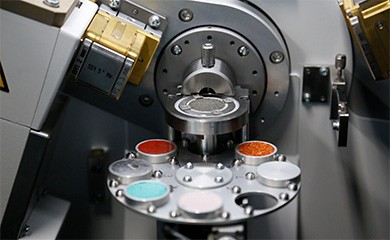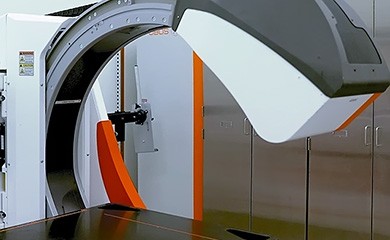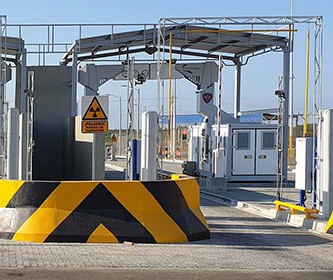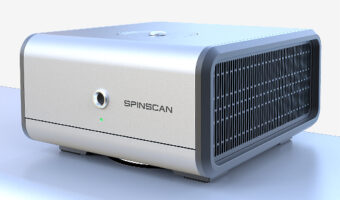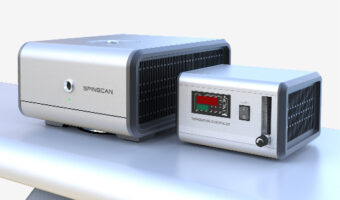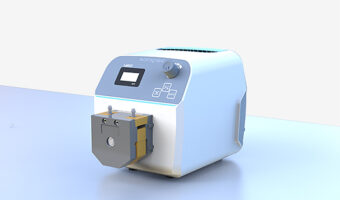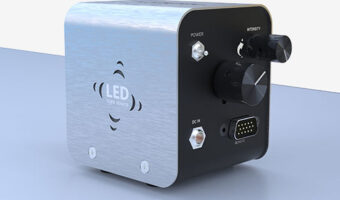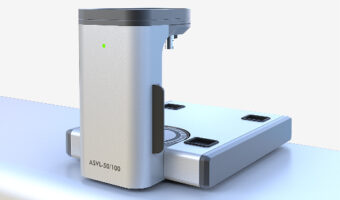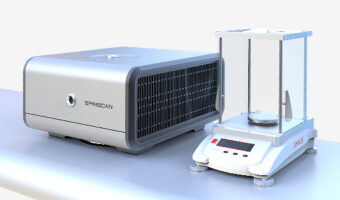
Applications for ESR
Chemistry of oil and petroleum products
 Application note. EPR Spectroscopy in petrochemistry EPR spectroscopy have a number of practical applications in the oil industry and oil refining: stability studies and detection of the lag time of thermal decomposition of engine oils; monitoring of coking reactions; measuring the concentration of chemical additives and their effect on fuel quality; measuring the concentration of transition elements; study of oxidation and polymerization reactions. The use of the EPR method in the chemistry of petroleum products includes the analysis of oil quality, the detection of asphaltenes and complex asphaltene compounds containing transition metals (vanadium, nickel, etc.) As asphaltenes are one of the highest molecular weight components of oil, their concentration has a direct impact on its viscosity, which is the most important factor necessary to solve problems associated with oil processing and transportation.
Application note. EPR Spectroscopy in petrochemistry EPR spectroscopy have a number of practical applications in the oil industry and oil refining: stability studies and detection of the lag time of thermal decomposition of engine oils; monitoring of coking reactions; measuring the concentration of chemical additives and their effect on fuel quality; measuring the concentration of transition elements; study of oxidation and polymerization reactions. The use of the EPR method in the chemistry of petroleum products includes the analysis of oil quality, the detection of asphaltenes and complex asphaltene compounds containing transition metals (vanadium, nickel, etc.) As asphaltenes are one of the highest molecular weight components of oil, their concentration has a direct impact on its viscosity, which is the most important factor necessary to solve problems associated with oil processing and transportation. Food chemistry
 The degradation of edible oils due to oxidation during processing, storage and heating is a big problem in the food industry. Also an pressing issue is the falsification of edible oils by diluting or replacing high-quality oils with lower-grade ones. EPR spectroscopy is an effective and unique method for analyzing edible fats and oils, assessing their quality indicators, determining their oxidative stability and antiradical activity. EPR technique provides an opportunity to study the earliest stages of lipid oxidation. Flavor degradation and changes in the organoleptic characteristics of beer, wine, brandy, cognac, tea, coffee, herbal preparations, vinegars, juices, butter, fish, linseed (these kind of oil is especially prone to rancidity due to the high content of unsaturated fatty acids) and other oils, as well as fried foods and bread (oxidating during roasting/baking) are also associated with oxidation processes. The EPR method makes it possible to monitor these processes.
The degradation of edible oils due to oxidation during processing, storage and heating is a big problem in the food industry. Also an pressing issue is the falsification of edible oils by diluting or replacing high-quality oils with lower-grade ones. EPR spectroscopy is an effective and unique method for analyzing edible fats and oils, assessing their quality indicators, determining their oxidative stability and antiradical activity. EPR technique provides an opportunity to study the earliest stages of lipid oxidation. Flavor degradation and changes in the organoleptic characteristics of beer, wine, brandy, cognac, tea, coffee, herbal preparations, vinegars, juices, butter, fish, linseed (these kind of oil is especially prone to rancidity due to the high content of unsaturated fatty acids) and other oils, as well as fried foods and bread (oxidating during roasting/baking) are also associated with oxidation processes. The EPR method makes it possible to monitor these processes. Polymer chemistry
 Free radical processes that occur in polymeric materials when interacting with the environment lead to a decrease in their quality indicators and worsen their functional properties. Important practical problems that require the use of the EPR method are: the development of methods for the protection of polymers, the assessment of the wear of polymeric materials and the identification of the degree of their destruction. EPR spectroscopy also makes it possible to study the photodegradation of polymers for photovoltaics and solar energy, to monitor the wear of electrical insulating materials, to study the biodistribution of polymer particles (polyelectrolyte microcapsules) in the body, to monitor the course of radical polymerization reactions in order to obtain polymer products with desired properties.
Free radical processes that occur in polymeric materials when interacting with the environment lead to a decrease in their quality indicators and worsen their functional properties. Important practical problems that require the use of the EPR method are: the development of methods for the protection of polymers, the assessment of the wear of polymeric materials and the identification of the degree of their destruction. EPR spectroscopy also makes it possible to study the photodegradation of polymers for photovoltaics and solar energy, to monitor the wear of electrical insulating materials, to study the biodistribution of polymer particles (polyelectrolyte microcapsules) in the body, to monitor the course of radical polymerization reactions in order to obtain polymer products with desired properties. Catalysis
 Catalysis plays an important role in natural processes and industrial production. In this regard, the study of the mechanisms of catalytic processes, the structure of catalysts, the theoretical prediction of new catalytic reactions, as well as the optimization of existing production processes are relevant and promising scientific and production tasks. Due to the presence of paramagnetic centers in most of the catalysts used, as well as due to the formation of paramagnetic intermediates during reactions occurring on the catalyst surface, EPR spectroscopy is a key method for studying catalytic systems and processes.
Catalysis plays an important role in natural processes and industrial production. In this regard, the study of the mechanisms of catalytic processes, the structure of catalysts, the theoretical prediction of new catalytic reactions, as well as the optimization of existing production processes are relevant and promising scientific and production tasks. Due to the presence of paramagnetic centers in most of the catalysts used, as well as due to the formation of paramagnetic intermediates during reactions occurring on the catalyst surface, EPR spectroscopy is a key method for studying catalytic systems and processes. Photochemistry / Electrochemistry
 The impact of electromagnetic radiation on a substance leads to the formation of paramagnetic centers of various nature: free radicals and triplet particles, excitons and crystal lattice defects. The EPR technique provides information about the nature and properties of these structures and can be effectively used to study the processes of photosynthesis, photodegradation of various substances and materials, photovoltaics and solar energy. EPR spectroscopy makes it possible to investigate the mechanism of chemical reactions initiated and/or occurring under the action of light, to establish the structure of intermediate particles formed during photochemical processes in a substance.
The impact of electromagnetic radiation on a substance leads to the formation of paramagnetic centers of various nature: free radicals and triplet particles, excitons and crystal lattice defects. The EPR technique provides information about the nature and properties of these structures and can be effectively used to study the processes of photosynthesis, photodegradation of various substances and materials, photovoltaics and solar energy. EPR spectroscopy makes it possible to investigate the mechanism of chemical reactions initiated and/or occurring under the action of light, to establish the structure of intermediate particles formed during photochemical processes in a substance. Alanine dosimetry
 Application note. EPR Spectroscopy in alanine dosimetry The EPR-alanine dosimetry system provides a means for measuring absorbed dose. The experimental procedure is based on measuring the intensity of the signal characteristic of stable free radicals formed under the action of ionizing radiation in crystalline alanine. The intensity of this EPR signal is proportional to the absorbed dose and does not depend on the radiation power and energy. The SPINSCAN X EPR spectrometer can be used as a conventional dosimetry system to read out the radiation dose in the range from 1 Gy to 200 kGy. EPR dosimetry is used to control the dose of irradiation of food products, sterilization of medical products.
Application note. EPR Spectroscopy in alanine dosimetry The EPR-alanine dosimetry system provides a means for measuring absorbed dose. The experimental procedure is based on measuring the intensity of the signal characteristic of stable free radicals formed under the action of ionizing radiation in crystalline alanine. The intensity of this EPR signal is proportional to the absorbed dose and does not depend on the radiation power and energy. The SPINSCAN X EPR spectrometer can be used as a conventional dosimetry system to read out the radiation dose in the range from 1 Gy to 200 kGy. EPR dosimetry is used to control the dose of irradiation of food products, sterilization of medical products. Free radicals and antioxidants
 Free radicals are highly reactive particles that have a negative impact on biological processes in the body. The action of free radicals underlies the processes of aging, mutagenesis, and oncological diseases. Free radicals also lead to the decomposition of polymeric and other materials, reducing the quality of food products. The development of spin trap and spin probe methods expands the range of possible applications of EPR spectroscopy for studying free radical processes in chemical and biological systems. A special direction is the use of EPR in the study of the action of antioxidants – natural or artificial substances that suppress free radical processes in the body.
Free radicals are highly reactive particles that have a negative impact on biological processes in the body. The action of free radicals underlies the processes of aging, mutagenesis, and oncological diseases. Free radicals also lead to the decomposition of polymeric and other materials, reducing the quality of food products. The development of spin trap and spin probe methods expands the range of possible applications of EPR spectroscopy for studying free radical processes in chemical and biological systems. A special direction is the use of EPR in the study of the action of antioxidants – natural or artificial substances that suppress free radical processes in the body. Geology
 The EPR method is very useful in solving problems facing geologists and widely used for the following: exploration of new deposits, study of the mineralogical composition of rocks and ores; identification of natural gems, determination of the source of their origin, detection of signs of ennoblement of jewelry stones; distinguishing artificial gems, identifying the method of their production; study of the causes of the appearance of the color of minerals; optimization of conditions for obtaining semi-precious and precious jewelry and ornamental stones; obtaining data on the crystal structure and mineral composition of rocks. EPR analysis is unique technology how to detect key formations in carbonate sections.
The EPR method is very useful in solving problems facing geologists and widely used for the following: exploration of new deposits, study of the mineralogical composition of rocks and ores; identification of natural gems, determination of the source of their origin, detection of signs of ennoblement of jewelry stones; distinguishing artificial gems, identifying the method of their production; study of the causes of the appearance of the color of minerals; optimization of conditions for obtaining semi-precious and precious jewelry and ornamental stones; obtaining data on the crystal structure and mineral composition of rocks. EPR analysis is unique technology how to detect key formations in carbonate sections. Instrumentation for education
 The EPR method is of great scientific and practical importance. Knowledge of magnetic resonance spectroscopy methods and, in particular, EPR spectroscopy is mandatory for the training of qualified specialists capable of creating innovative products and solutions that are competitive and in demand on the world market. For this reason, EPR spectroscopy is included in the curricula of many universities, teaching aids, laboratory and practical work are being developed to help students in the theoretical development of this research method, as well as in developing practical skills using it in future for solving advanced problems.
The EPR method is of great scientific and practical importance. Knowledge of magnetic resonance spectroscopy methods and, in particular, EPR spectroscopy is mandatory for the training of qualified specialists capable of creating innovative products and solutions that are competitive and in demand on the world market. For this reason, EPR spectroscopy is included in the curricula of many universities, teaching aids, laboratory and practical work are being developed to help students in the theoretical development of this research method, as well as in developing practical skills using it in future for solving advanced problems. 

